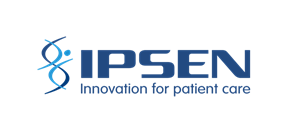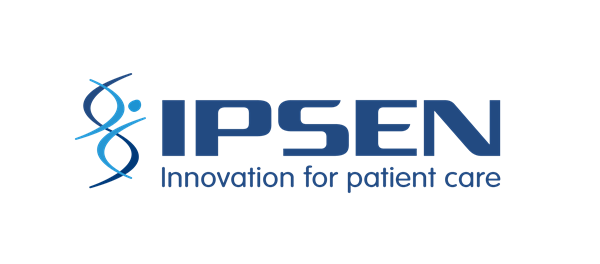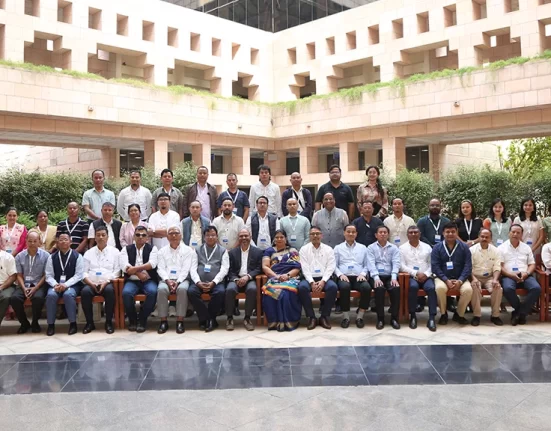
-
New electronic autoinjector is designed to improve patient experience for people living with gastroenteropancreatic neuroendocrine tumors, carcinoid syndrome or acromegaly
-
Performance and safety studies ongoing, with first launches for the new device expected in 2024
-
A fourth generation Somatuline® Autogel® / Somatuline® Depot device building on Ipsen’s 20 years’ heritage to date
PARIS, FRANCE, 16 March 2022 – Ipsen (Euronext: IPN; ADR: IPSEY) announced today it will invest in a new state-of-the-art electronic autoinjector for Somatuline® Autogel® / Somatuline® Depot (lanreotide), to deliver further innovation in the class with the aim of improving administration and the injection experience for patients. The new device will be made in collaboration with Phillips-Medisize, global leaders in drug-delivery design, development and manufacturing solutions, and will be accompanied by enhanced investment in Ipsen’s Signes manufacturing site in France. This step further builds on Ipsen’s 20 years’ experience with Somatuline Autogel / Somatuline Depot, with today’s announcement marking the fourth generation of devices for its administration.
Despite advances in technology, real-world evidence suggests people living with gastroenteropancreatic neuroendocrine tumors or acromegaly often still experience pain and discomfort when receiving injections.1 The enhanced delivery system will improve the patient experience through administration of Somatuline Autogel / Somatuline Depot via its motorized device comprised of a re-usable electronic injector and a disposable cartridge with significantly thinner injection needle allowing for a controlled and sustained injection. The new device aims to further improve the injection experience, especially for caregivers and eligible patients who may choose independent administration* of Somatuline Autogel, for example at home.
Ipsen’s extensive experience with Somatuline Autogel / Somatuline Depot has offered deep insights into the challenges of living with gastroenteropancreatic neuroendocrine tumors, carcinoid syndrome or acromegaly. Advances in administration are important as they have the potential to help ease the physical challenges of treatment for the patient, caregiver and their healthcare team, especially for patients who are on long-term treatment regimens.
Steven Hildemann M.D. PhD, Executive Vice President, Chief Medical Officer, Head of Global Medical Affairs and Patient Safety, said, “Ipsen has continued to innovate in patient-friendly devices for the administration of Somatuline Autogel / Somatuline Depot and today’s news signals our unrelenting commitment to further improving the injection experience for patients, caregivers and healthcare professionals. We remain focused on improving an already compelling device, to better address the needs of people living with gastroenteropancreatic neuroendocrine tumors, carcinoid syndrome or acromegaly”.
Studies evaluating the performance and the safety of the new device are ongoing. A study assessing injection-site pain and device safety is expected to start in the first half of 2023 and will evaluate patient-reported outcomes and satisfaction. Details of this study will be available on clinicaltrials.gov shortly once the selected centers have been finalized in H2 2022, with the new device anticipated to reach the first patients in 2024. The overall investment in the development of the new device and enhanced allocation to the Ipsen Signes manufacturing site is around €60m.
About Somatuline® Autogel® / Somatuline® Depot (lanreotide)
Somatuline® Autogel® / Somatuline® Depot is made of the active substance lanreotide and is a long-acting somatostatin analogue that inhibits the secretion of growth hormone and certain hormones secreted by the digestive system. The licensed indications of Somatuline Autogel / Somatuline Depot are:2,i
-
The treatment of individuals with acromegaly when the circulating levels of Growth Hormone (GH) and/or Insulin-like Growth Factor-1 (IGF-1) remain abnormal after surgery and/or radiotherapy, or in patients who otherwise require medical treatment;
-
The treatment of grade 1 and a subset of grade 2 (Ki-67 index up to 10%) gastroenteropancreatic neuroendocrine tumors (GEP-NETs) of midgut, pancreatic or unknown origin where hindgut sites of origin have been excluded, in adult patients with unresectable locally advanced or metastatic disease;
-
The treatment of symptoms associated with neuroendocrine (particularly carcinoid) tumors. The recommended starting dose is one injection of Somatuline Autogel / Somatuline Depot 60 to 120 mg administered every 28 days.
*The decision regarding independent administration of Somatuline Autogel is only applicable to countries where this option is approved in the Product Information/Summary of Product Characteristics and for patients on stable dose upon HCP decision and after appropriate training by HCP.
The detailed recommendations for the use of Somatuline Autogel/Somatuline Depot are described in the Summary of Product Characteristics (SmPC) and US Prescribing Information (PI).
i Approved indications may vary depending on country
About NETs and carcinoid syndrome
Neuroendocrine tumors (NETs), are a group of uncommon tumors that develop in the cells of the neuroendocrine system, throughout the body.3,4 NETs occur in both men and women, in general aged 50 to 60 years old, although they can affect anyone of any age.5
The three areas where NETs are mostly found in the body are the gastrointestinal tract, the pancreas and the lungs.4
-
Gastrointestinal NETs are found in the gastrointestinal tract or digestive system and are the most common type of NETs.4
-
Pancreatic NETs are formed in the islet cells of the pancreas and include several uncommon types of NETs.4
-
Lung NETs account for about 20 – 30% of all NETs.6
The symptoms of NETs are often not distinct and difficult to identify and can sometimes take up to seven years to fully diagnose.7 The number of people being newly diagnosed with NETs overall is believed to be rising.5 This is mainly due to increased awareness of the condition and diagnostic testing.5
Carcinoid syndrome occurs when rare cancerous neuroendocrine tumors called carcinoid tumors release proteins into the bloodstream, causing signs and symptoms, including diarrhea and flushing.8 Carcinoid tumors generally occur in the esophagus, stomach, intestines, appendix, and lungs.8
About acromegaly
Acromegaly is a rare and debilitating disease. It happens when the pituitary gland (a pea-sized gland in the brain) produces too much growth hormone.9 This can cause changes in the bones of the face and in the levels of other specific hormones.9 If left untreated, acromegaly can lead to other medical problems.9 Approximately three to 11 people in one million are newly diagnosed with acromegaly each year.10
About Ipsen
Ipsen is a global, mid-sized biopharmaceutical company focused on transformative medicines in Oncology, Rare Disease and Neuroscience; it also has a well-established consumer healthcare business. With total sales of over €2.9bn in FY 2021, Ipsen sells more than 25 medicines in over 115 countries, with a direct commercial presence in more than 30 countries. The company’s research and development efforts are focused on its innovative and differentiated technological platforms located in the heart of leading biotechnological and life-science hubs: Paris-Saclay, France; Oxford, U.K.; Cambridge, U.S.; Shanghai, China. Ipsen has c.5,700 colleagues worldwide and is listed in Paris (Euronext: IPN) and in the U.S. through a Sponsored Level I American Depositary Receipt program (ADR: IPSEY). For more information, visit ipsen.com.
About Phillips-Medisize
Phillips-Medisize, a Molex company, brings decades of innovation to leading healthcare and life science companies to develop groundbreaking solutions that help people live healthier, more productive lives. On average, the company helps commercialize 50 new products a year for customers, including the first-to market FDA-registered drug-delivery device utilizing a connected health system. Molex brings decades of experience in advanced electronics, connectivity and sensor technologies to help transform medical and pharmaceutical solutions.
About Molex
Molex makes a connected world possible by enabling technologies that transform the future and improve lives. With a presence in more than 40 countries, Molex offers a complete range of connectivity products, services and solutions for the data communications, medical, industrial, automotive and consumer electronics industries. For more information, visit www.molex.com.
Ipsen’s Forward Looking Statements
The forward-looking statements, objectives and targets contained herein are based on Ipsen’s management strategy, current views and assumptions. Such statements involve known and unknown risks and uncertainties that may cause actual results, performance or events to differ materially from those anticipated herein. All of the above risks could affect Ipsen’s future ability to achieve its financial targets, which were set assuming reasonable macroeconomic conditions based on the information available today. Use of the words “believes”, “anticipates” and “expects” and similar expressions are intended to identify forward-looking statements, including Ipsen’s expectations regarding future events, including regulatory filings and determinations. Moreover, the targets described in this document were prepared without taking into account external growth assumptions and potential future acquisitions, which may alter these parameters. These objectives are based on data and assumptions regarded as reasonable by Ipsen. These targets depend on conditions or facts likely to happen in the future, and not exclusively on historical data. Actual results may depart significantly from these targets given the occurrence of certain risks and uncertainties, notably the fact that a promising product in early development phase or clinical trial may end up never being launched on the market or reaching its commercial targets, notably for regulatory or competition reasons and also taking into consideration assessment delays of certain clinical trials in light of the ongoing COVID-19 pandemic. Ipsen must face or might face competition from generic products that might translate into a loss of market share. Furthermore, the Research and Development process involves several stages each of which involves the substantial risk that Ipsen may fail to achieve its objectives and be forced to abandon its efforts with regards to a product in which it has invested significant sums. Therefore, Ipsen cannot be certain that favorable results obtained during preclinical trials will be confirmed subsequently during clinical trials, or that the results of clinical trials will be sufficient to demonstrate the safe and effective nature of the product concerned. There can be no guarantees a product will receive the necessary regulatory approvals or that the product will prove to be commercially successful. If underlying assumptions prove inaccurate or risks or uncertainties materialize, actual results may differ materially from those set forth in the forward-looking statements. Other risks and uncertainties include but are not limited to, general industry conditions and competition; general economic factors, including interest rate and currency exchange rate fluctuations; the impact of pharmaceutical industry regulation and health care legislation; global trends toward health care cost containment; technological advances, new products and patents attained by competitors; challenges inherent in new product development, including obtaining regulatory approval; Ipsen’s ability to accurately predict future market conditions; manufacturing difficulties or delays; financial instability of international economies and sovereign risk; dependence on the effectiveness of Ipsen’s patents and other protections for innovative products; and the exposure to litigation, including patent litigation, and/or regulatory actions. Ipsen also depends on third parties to develop and market some of its products which could potentially generate substantial royalties; these partners could behave in such ways which could cause damage to Ipsen’s activities and financial results. Ipsen cannot be certain that its partners will fulfil their obligations. It might be unable to obtain any benefit from those agreements. A default by any of Ipsen’s partners could generate lower revenues than expected. Such situations could have a negative impact on Ipsen’s business, financial position or performance. Ipsen expressly disclaims any obligation or undertaking to update or revise any forwardlooking statements, targets or estimates contained in this press release to reflect any change in events, conditions, assumptions or circumstances on which any such statements are based, unless so required by applicable law. Ipsen’s business is subject to the risk factors outlined in its registration documents filed with the French Autorité des Marchés Financiers. The risks and uncertainties set out are not exhaustive and the reader is advised to refer to the Ipsen’s 2020 Universal Registration Document, available on ipsen.com.
For further information:
|
Contacts |
|
|
Investors |
|
|
Craig Marks Vice President, Investor Relations +44 7584 349 193 |
Adrien Dupin de Saint-Cyr Investor Relations Manager +33 6 64 26 17 49 |
|
Media |
|
|
Joanna Parish Global Head of Franchise Communications, Oncology +44 7840 023 741 |
Emma Roper Senior Manager, Global Franchise Communications +44 7711 766 517 |
References
-
O’Toole D. et al. ENETS 2022. PRESTO 2: an international patient survey to evaluate impact of injection
and delivery system on local pain when administering somatostatin analogue (SSA) therapy -
Somatuline Autogel (lanreotide acetate) SmPC. Last accessed: February 2022. Available from: https://www.medicines.org.uk/emc/product/4808/smpc
-
Neuroendocrine Tumour (NETs). Macmillan. Last accessed: February 2022. Available from:https://www.macmillan.org.uk/cancer–information–and–support/neuroendocrine–tumours–nets.
-
Zekri et al. Neuroendocrine tumor of the kidney: Diagnostic challenge and successful therapy. Urology Annals. 2019;11:4, DOI: https://doi.org/10.4103/UA.UA_169_18.
-
Dasari A. et al. Trends in the Incidence, Prevalence, and Survival Outcomes in Patients With Neuroendocrine Tumors in the United States. JAMA Oncol. 2017 Oct 1;3(10):1335-1342, DOI:10.1001/jamaoncol.2017.0589
-
Hendifar, A.E et al. Neuroendocrine Tumors of the Lung: Current Challenges and Advances in the Diagnosis and Management of Well-Differentiated Disease. Journal of Thoracic Oncology. 2017;12(3): 425-436, DOI: https://doi.org/10.1016/j.jtho.2016.11.2222
-
Hallet JC. et al. Exploring the rising incidence of neuroendocrine tumors: a population-based analysis of epidemiology, metastatic presentation, and outcomes. Cancer. 2015;121:589–97, DOI: https://doi.org/10.1002/cncr.29099
-
Mayo Clinic. Carcinoid syndrome. Last accessed: February 2022. Available from: https://www.mayoclinic.org/diseases–conditions/carcinoid–syndrome/symptoms–causes/syc–20370666
-
Mayo Clinic. Acromegaly. Last accessed: February 2022. Available from: https://www.mayoclinic.org/diseases–conditions/acromegaly/symptoms–causes/syc–20351222
-
Acromegaly. Last accessed: February 2022. Available from: https://rarediseases.org/rarediseases/acromegaly/
Attachment









